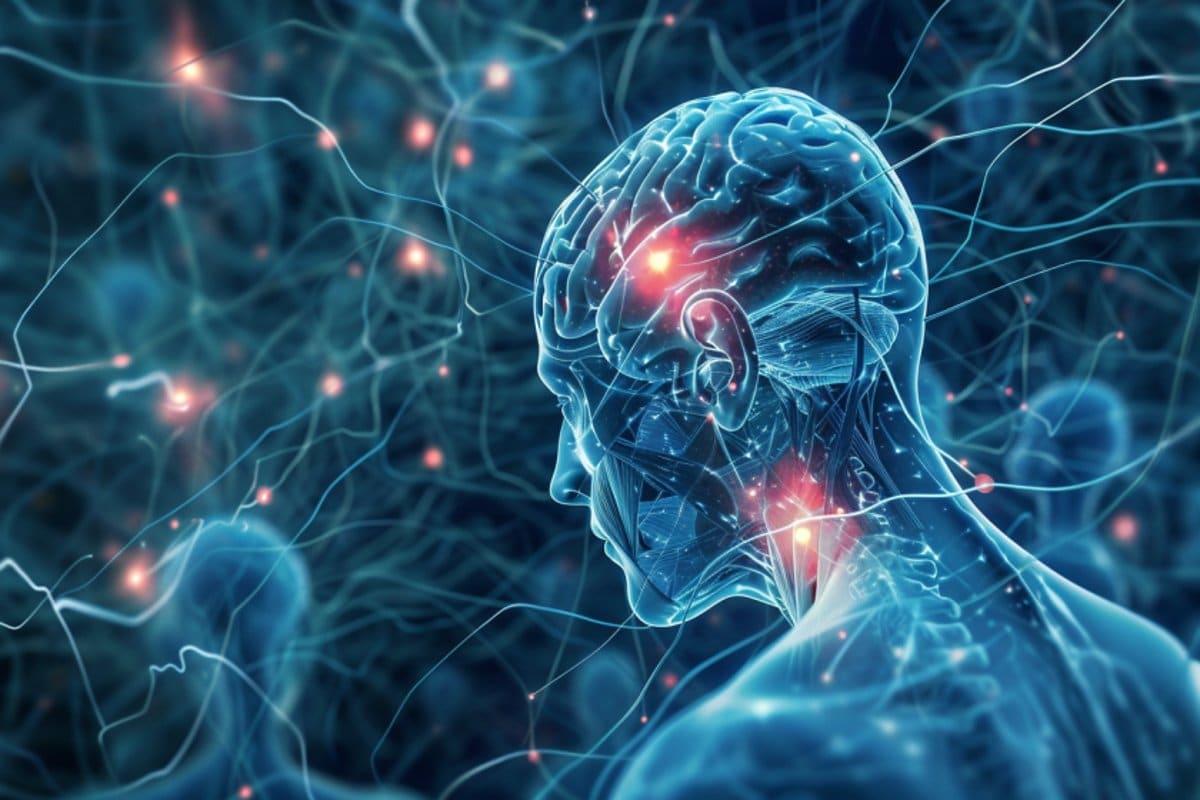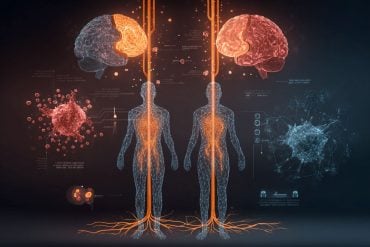Summary: A new study explains how dopamine influences movement sequences, offering hope for Parkinson’s disease (PD) therapies. Researchers observed that dopamine not only motivates movement but also controls the length and lateralization of actions, with different neurons activating for movement initiation and reward reception.
Through innovative experiments involving genetically modified mice, the team discovered that dopamine’s effect on movement is side-specific, enhancing actions on the opposite side of the body where neurons are active.
These findings underscore dopamine’s complex role in movement and its potential for developing targeted treatments for PD, focusing on the restoration of specific motor functions.
Key Facts:
- Dopamine and Movement Sequences: Dopamine signals directly influence the length and initiation of movement sequences, suggesting a nuanced role beyond general motivation.
- Lateralization of Dopamine’s Effects: The study reveals that dopamine’s impact on movement is contralateral, meaning it specifically enhances movements on the opposite side of the body from where the dopamine neurons are active.
- Potential for Targeted PD Therapies: Understanding the distinct roles of movement-related and reward-related dopamine neurons opens new avenues for creating PD treatments that address specific movement impairments.
Source: Champalimaud Centre for the Unknown
Imagine the act of walking. It’s something most able-bodied people do without a second thought. Yet it is actually a complex process involving various neurological and physiological systems. PD is a condition where the brain slowly loses specific cells, called dopamine neurons, resulting in reduced strength and speed of movements.
However, there’s another important aspect that gets affected: the length of actions. Someone with PD might not only move more slowly but also take fewer steps in a walking sequence or bout before stopping.
This study shows that dopamine signals directly affect the length of movement sequences, taking us a step closer to unlocking new therapeutic targets for enhancing motor function in PD.

“Dopamine is most closely associated with reward and pleasure, and is often referred to as the ‘feel-good’ neurotransmitter”, points out Marcelo Mendonça, the study’s first author. “But, for dopamine-deficient individuals with PD, it’s typically the movement impairments that most impact their quality of life. One aspect that has always interested us is the concept of lateralisation.
“In PD, symptoms manifest asymmetrically, often beginning on one side of the body before the other. With this study, we wanted to explore the theory that dopamine cells do more than just motivate us to move, they specifically enhance movements on the opposite side of our body”.
Shedding Light on the Brain
To this end, the researchers developed a novel behavioural task, which required freely-moving mice to use one paw at a time to press a lever in order to obtain a reward (a drop of sugar water). To understand what was happening in the brain during this task, the researchers used one-photon imaging, similar to giving the mice a tiny, wearable microscope.
This microscope was aimed at the Substantia nigra pars compacta (SNc), a dopamine-rich region deep within the brain that is significantly impacted in PD, allowing the scientists to see the activity of brain cells in real-time.
They genetically engineered these mice so that their dopamine neurons would light up when active, using a special protein that glows under the microscope. This meant that every time a mouse was about to move its paw or succeeded in getting a reward, the scientists could see which neurons were lighting up and getting excited about the action or the reward.
Observing these glowing neurons, the discoveries were, quite literally, illuminating. “There were two types of dopamine neurons mixed together in the same area of the brain”, notes Mendonça. “Some neurons became active when the mouse was about to move, while others lit up when the mouse got its reward. But what really caught our attention was how these neurons reacted depending on which paw the mouse used”.
How Dopamine Chooses Sides
The team noticed that the neurons excited by movement lit up more when the mouse used the paw opposite to the brain side being observed. For example, if they were looking at the right side of the brain, the neurons were more active when the mouse used its left paw, and vice versa. Digging deeper, the scientists found that the activity of these movement-related neurons not only signalled the start of a movement but also seemed to encode, or represent, the length of the movement sequences (the number of lever presses).
Mendonça elaborates, “The more the mouse was about to press the lever with the paw opposite the brain side we were observing, the more active neurons became. For example, neurons on the right side of the brain became more excited when the mouse used its left paw to press the lever more often.
“But when the mouse pressed the lever more with its right paw, these neurons didn’t show the same increase in excitement. In other words, these neurons care not just about whether the mouse moves, but also about how much they move, and on which side of the body”.
To study how losing dopamine affects movement, the researchers used a neurotoxin to selectively reduce dopamine-producing cells on one side of a mouse’s brain. This method mimics conditions like PD, where dopamine levels drop and movement becomes difficult. By doing this, they could see how less dopamine changes the way mice press a lever with either paw.
They discovered that reducing dopamine on one side led to fewer lever presses with the paw on the opposite side, while the paw on the same side remained unaffected. This provided further evidence for the side-specific influence of dopamine on movement.
Implications and Future Directions
Rui Costa, the study’s senior author, picks up the story, “Our findings suggest that movement-related dopamine neurons do more than just provide general motivation to move – they can modulate the length of a sequence of movements in a contralateral limb, for example. In contrast, the activity of reward-related dopamine neurons is more universal, and doesn’t favour one side over the other. This reveals a more complex role of dopamine neurons in movement than previously thought”.
Costa reflects, “The different symptoms observed in PD patients could be perhaps related to which dopamine neurons are lost—for instance, those more linked to movement or to reward. This could potentially enhance management strategies in the disease that are more tailored to the type of dopamine neurons that are lost, especially now that we know there are different types of genetically defined dopamine neurons in the brain”.
About this dopamine and neuroscience research news
Author: Hedi Young
Source: Champalimaud Centre for the Unknown
Contact: Hedi Young – Champalimaud Centre for the Unknown
Image: The image is credited to Neuroscience News
Original Research: Open access.
“Dopamine neuron activity encodes the length of upcoming contralateral movement sequences” by Marcelo Mendonça et al. Current Biology
Abstract
Dopamine neuron activity encodes the length of upcoming contralateral movement sequences
Highlights
- Developed a freely moving task where mice learn individual forelimb sequences
- Movement-modulated DANs encode the length of contralateral movement sequences
- The activity of reward-modulated DANs is not lateralized
- Dopamine depletion impaired contralateral, but not ipsilateral, sequence length
Summary
Dopaminergic neurons (DANs) in the substantia nigra pars compacta (SNc) have been related to movement speed, and loss of these neurons leads to bradykinesia in Parkinson’s disease (PD). However, other aspects of movement vigor are also affected in PD; for example, movement sequences are typically shorter.
However, the relationship between the activity of DANs and the length of movement sequences is unknown. We imaged activity of SNc DANs in mice trained in a freely moving operant task, which relies on individual forelimb sequences.
We uncovered a similar proportion of SNc DANs increasing their activity before either ipsilateral or contralateral sequences. However, the magnitude of this activity was higher for contralateral actions and was related to contralateral but not ipsilateral sequence length.
In contrast, the activity of reward-modulated DANs, largely distinct from those modulated by movement, was not lateralized. Finally, unilateral dopamine depletion impaired contralateral, but not ipsilateral, sequence length.
These results indicate that movement-initiation DANs encode more than a general motivation signal and invigorate aspects of contralateral movements.






